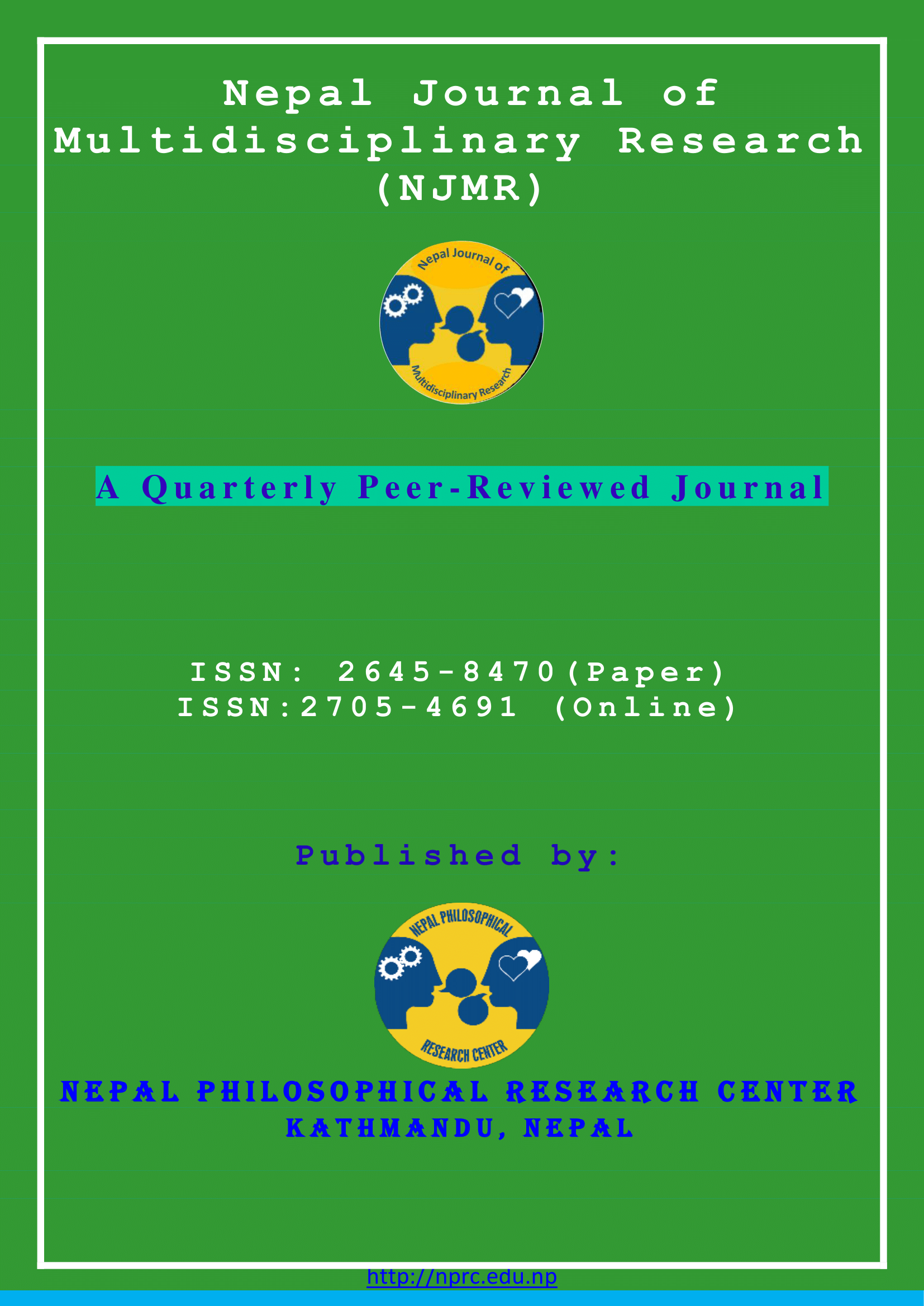Mini Texts: A Fusion of Grammar, Communication and Vocabulary Development in CLT (Communicative Language Teaching)
DOI:
https://doi.org/10.3126/njmr.v4i2.39023Keywords:
Mini Texts, Input, Communicative Language TeachingAbstract
Rich and adequate input is the first and foremost condition for perfect language learning, other important things come later in order to achieve the goal of developing communicative competence in a language learning process in an EFL or ESL setting. In this context, Communicative Language Learning (CLT) is still the most prevalent approach of English language learning/teaching field both in ESL and EFL settings. In EFL settings CLT is adopted nowadays with some reservations. One solution to the drawbacks of CLT is "mini texts" in order to provide rich and adequate language input as they subsume grammar, communication, and most importantly, adequate vocabulary development. Objectives: The main objective is to critically assess the role of mini texts in order to provide rich and adequate language input for language learning. Method: Collaborative action research design was adopted to assess the outcome of teaching "mini texts" under improved communicative approach. Brief written and oral performance tests of class ten students were used as the tools of evaluation. Purposive sampling was used for the selection of thirty schools in three districts of the Kathmandu Valley whereas random sampling was used to select the respondent students of mixed ability for the written and oral performance test. The test items for the test were easy enough to be answered by average students of even lower classes. The test items were based on fixed criteria: different elements of grammatical competence to write and speak correctly, and also on some essential aspects of informal colloquial English used in fast spoken English. Pre-test and Post test were administered in order to compare the result of the traditional teaching with the outcome of the new method teaching with "mini texts" as the primary teaching material to provide optimal and quality language input to the students. Result: The over-all result of the test shows that the learning outcome, in general, is rather frustrating. Let alone government schools where most of the students belong to lower-class unprivileged families, even in private schools, or rather in so called A grade private schools, the condition of the English proficiency from the viewpoint of grammatical competence is rather frustrating. Surprisingly, not a single school could obtain even pass marks whereas same students secure good marks in their national level SEE exam.Conclusion: The current English teaching practice in Nepalese schools is deficient in (i) optimal quality language input, and (ii) suitable teaching methods to produce desirable outcome of English teaching for better learning outcome or better communicative proficiency. Mini texts have come out as an appropriate teaching material to be experimented on a large scale as they subsume essential, grammar points, essential vocabulary stock and also communication-oriented practice exercises.
Downloads
Downloads
Published
How to Cite
Issue
Section
License
Copyright (c) 2021 R. K. P. Shrestha, Pooja Gupta

This work is licensed under a Creative Commons Attribution-NonCommercial 4.0 International License.
This license enables reusers to distribute, remix, adapt, and build upon the material in any medium or format for noncommercial purposes only, and only so long as attribution is given to the creator.




